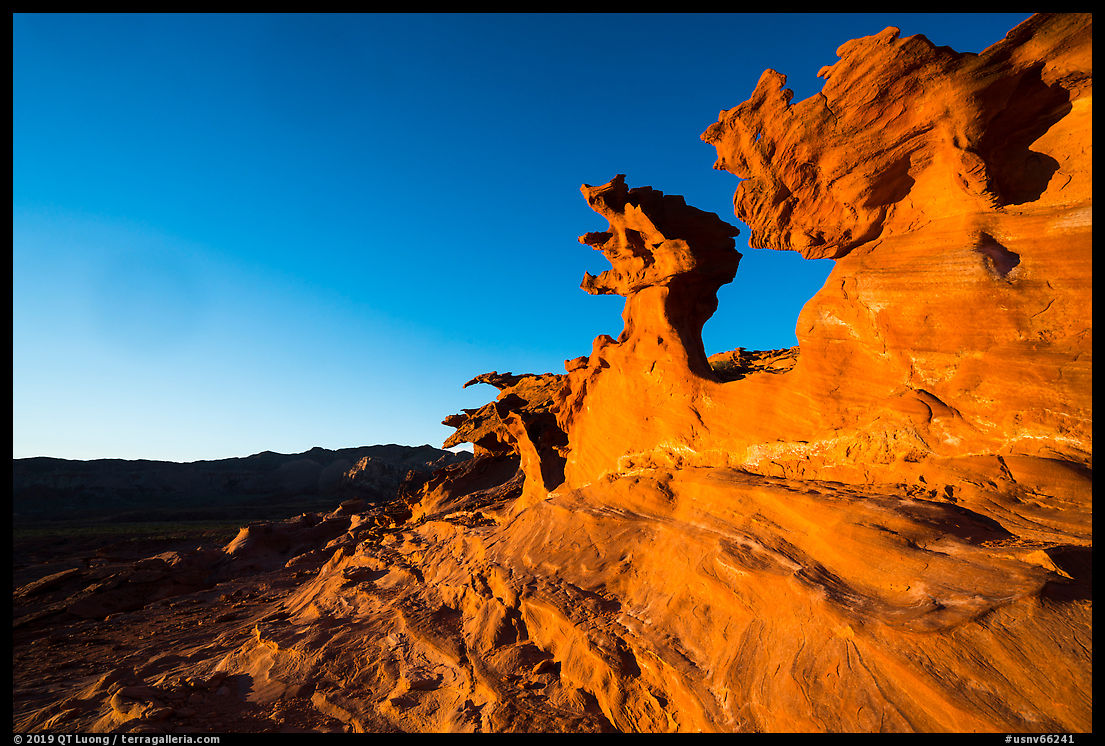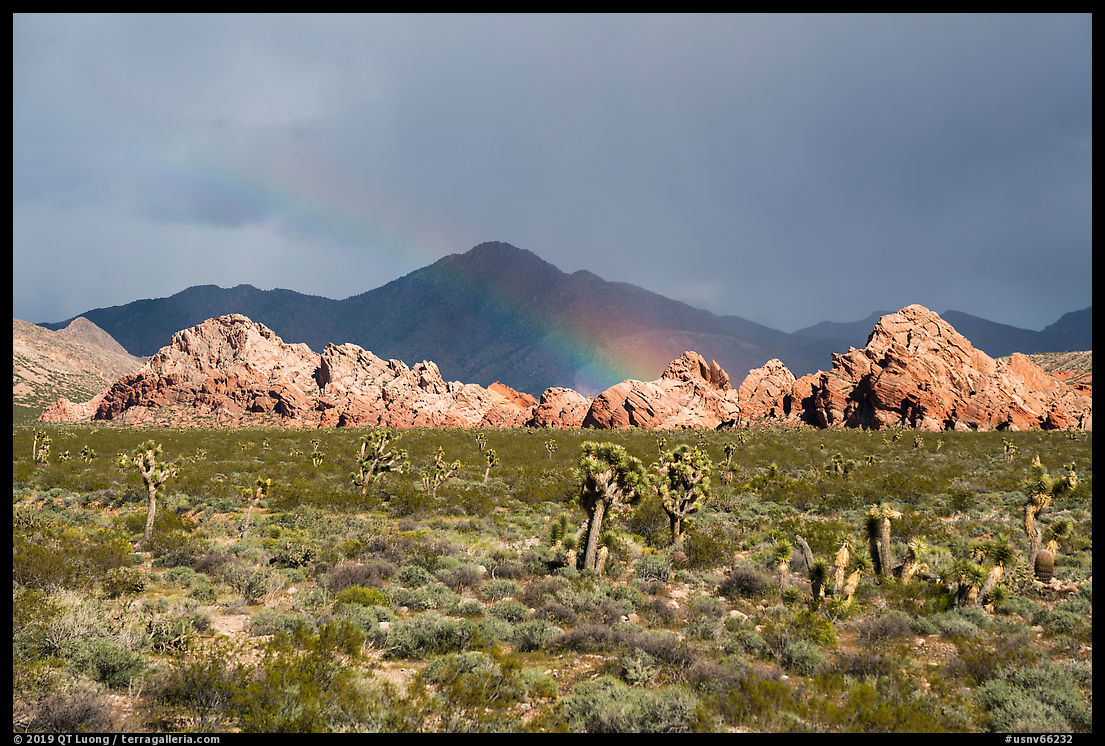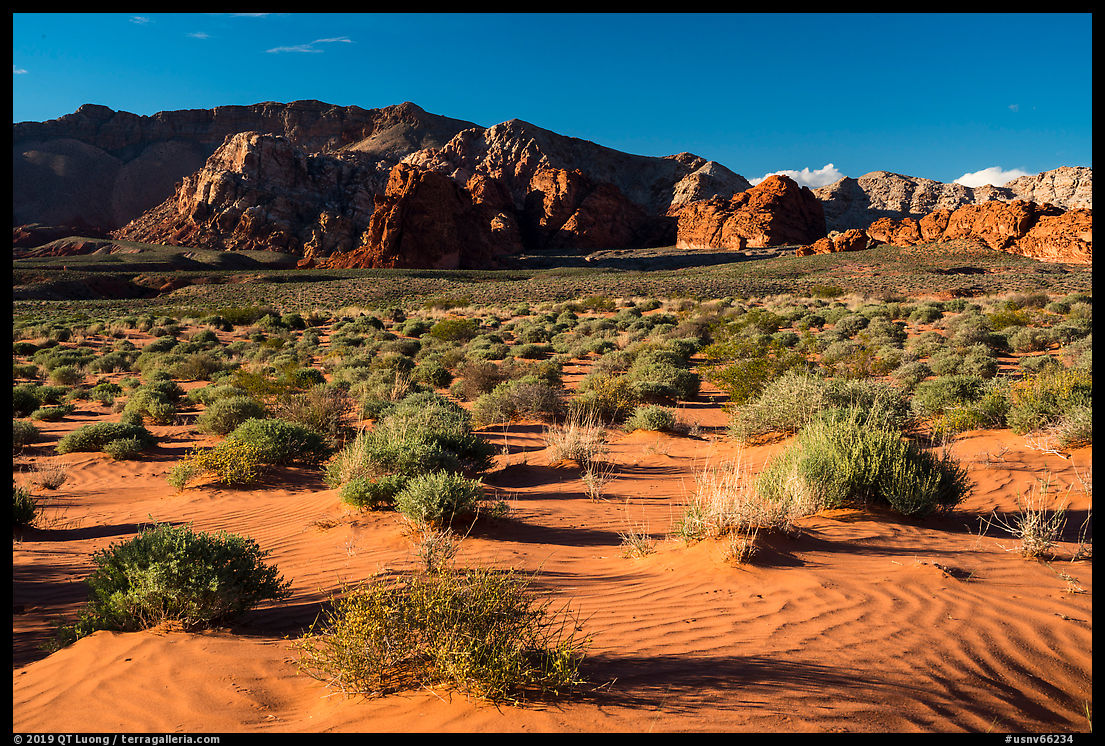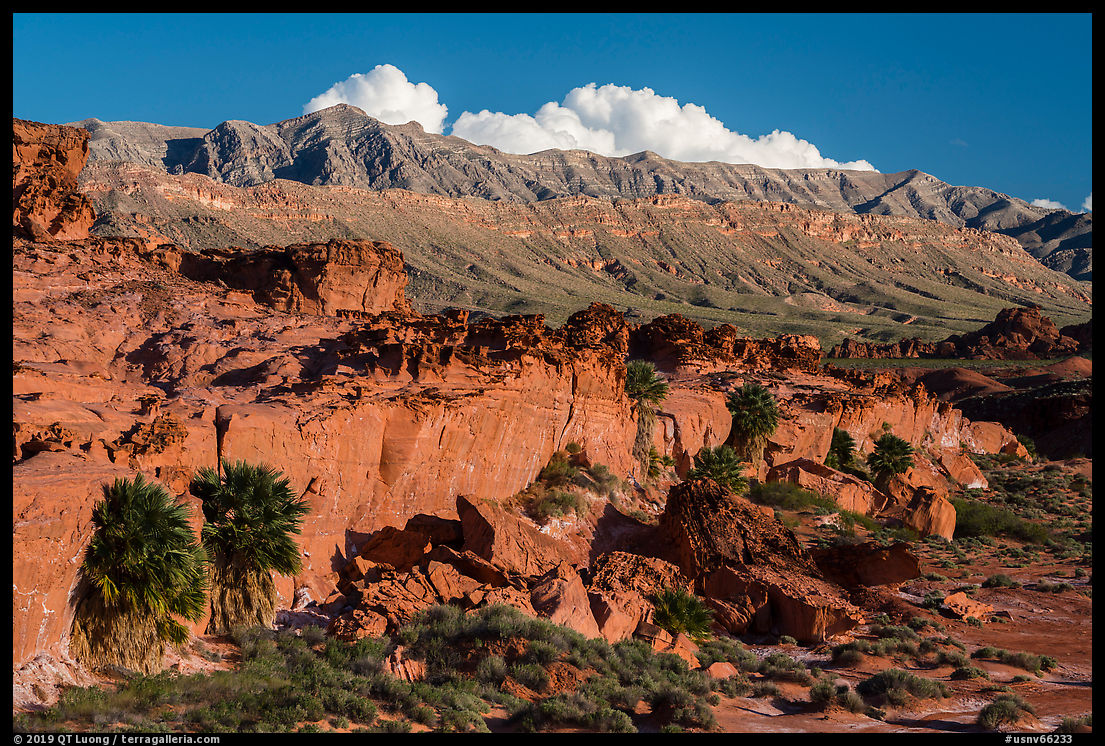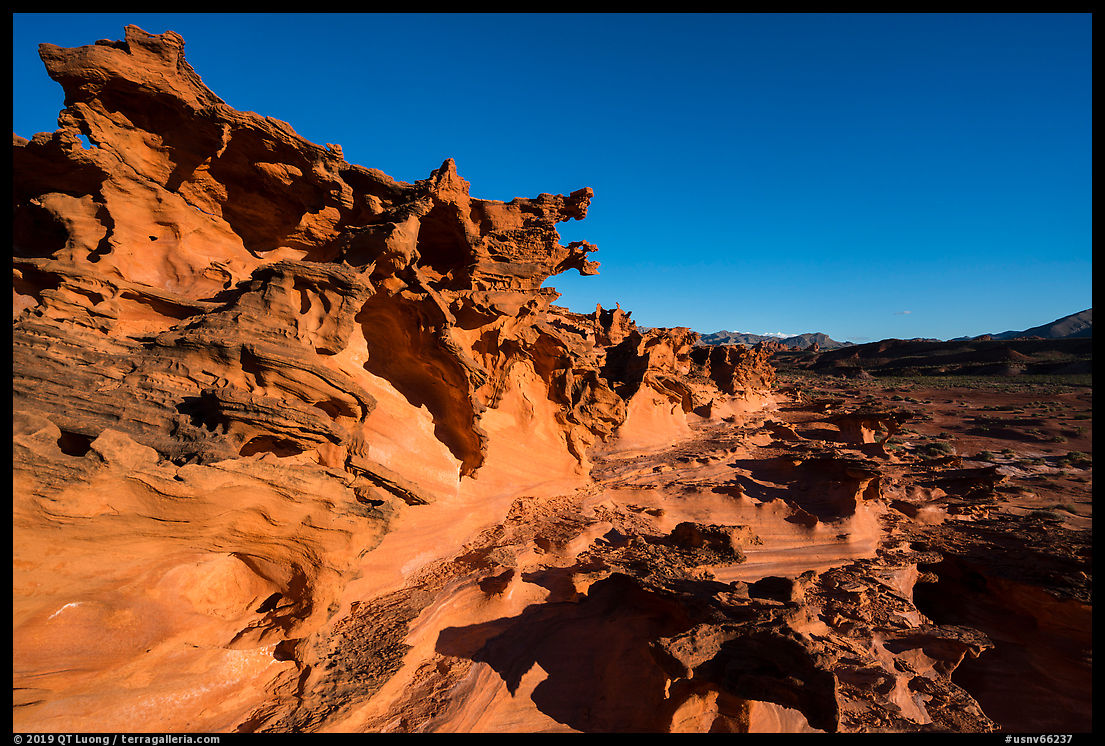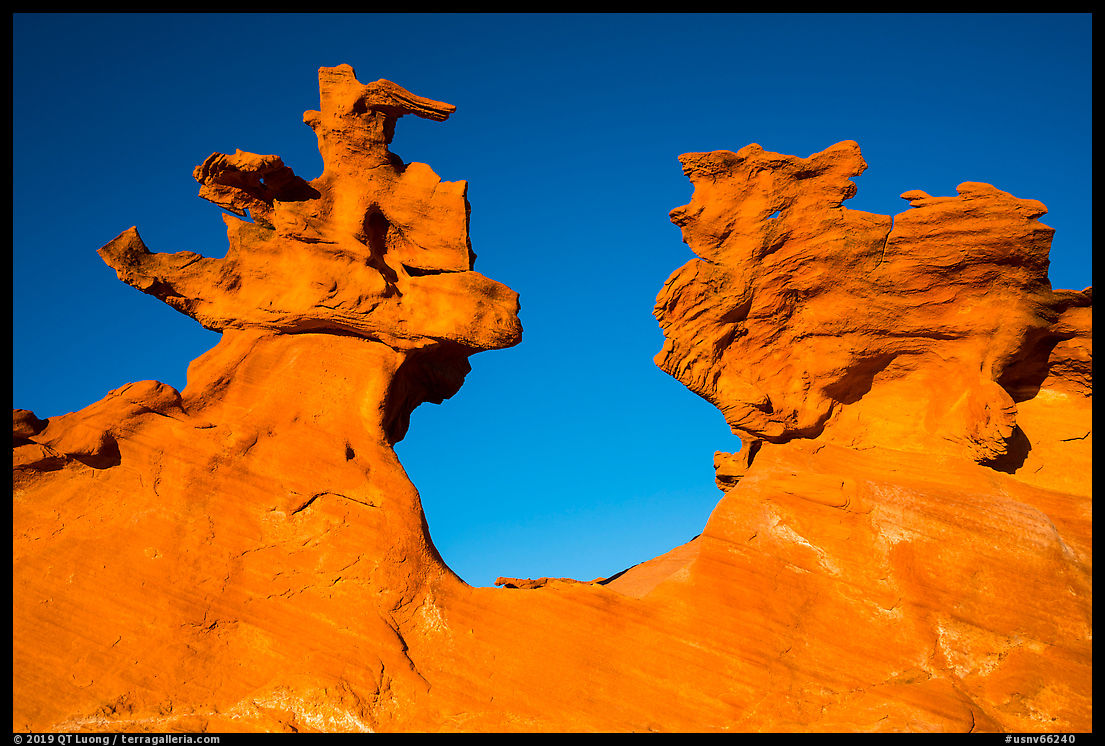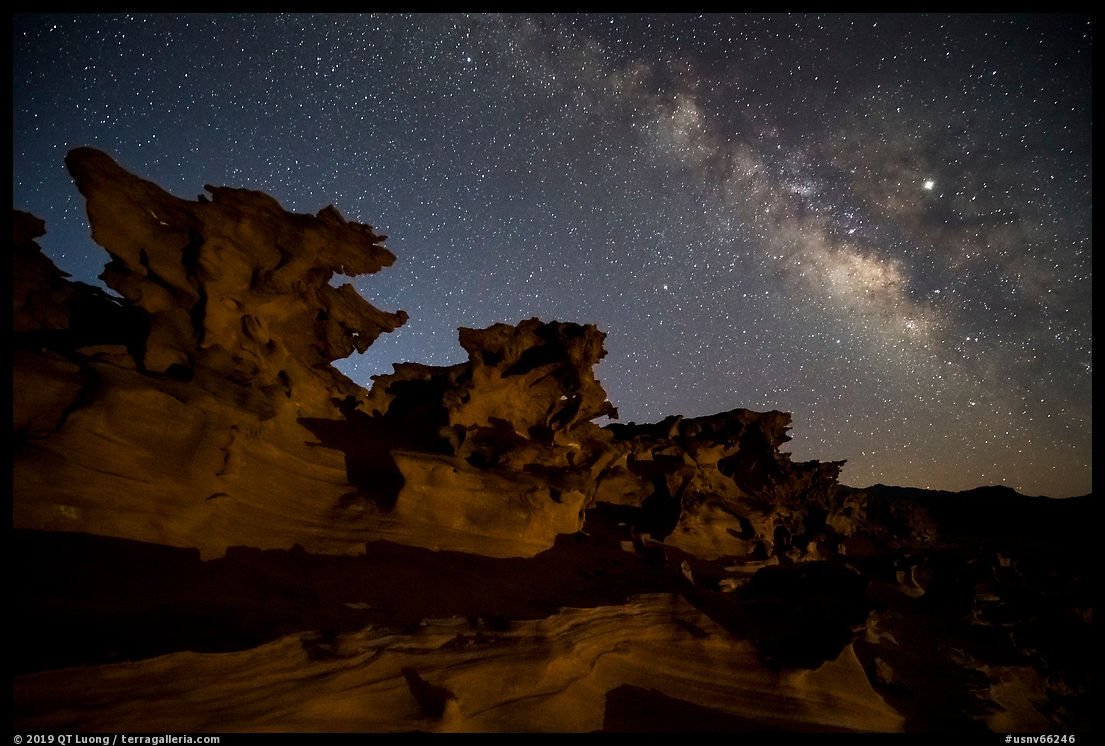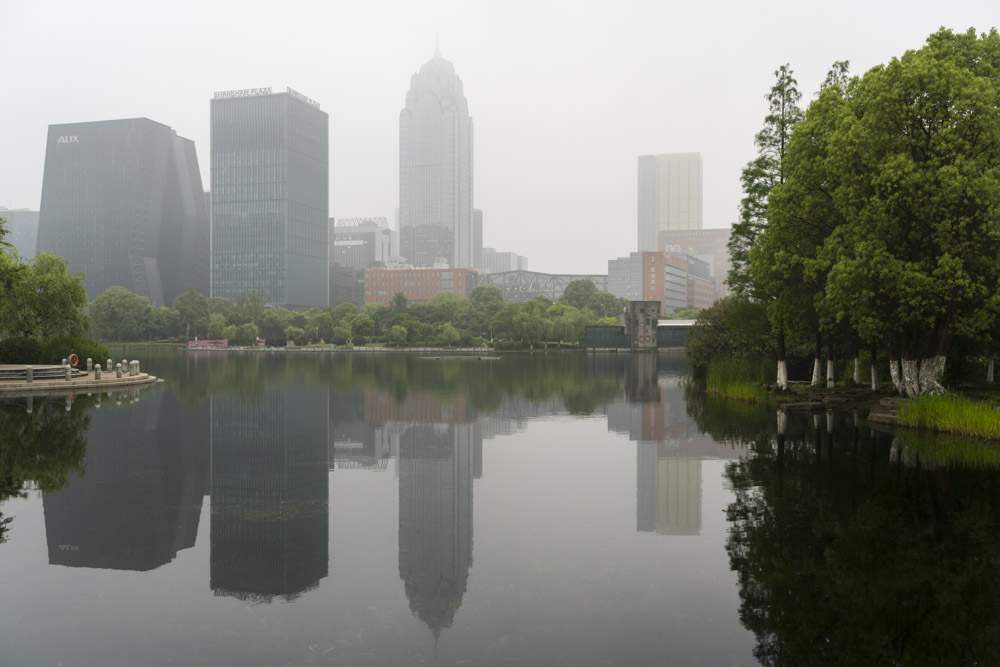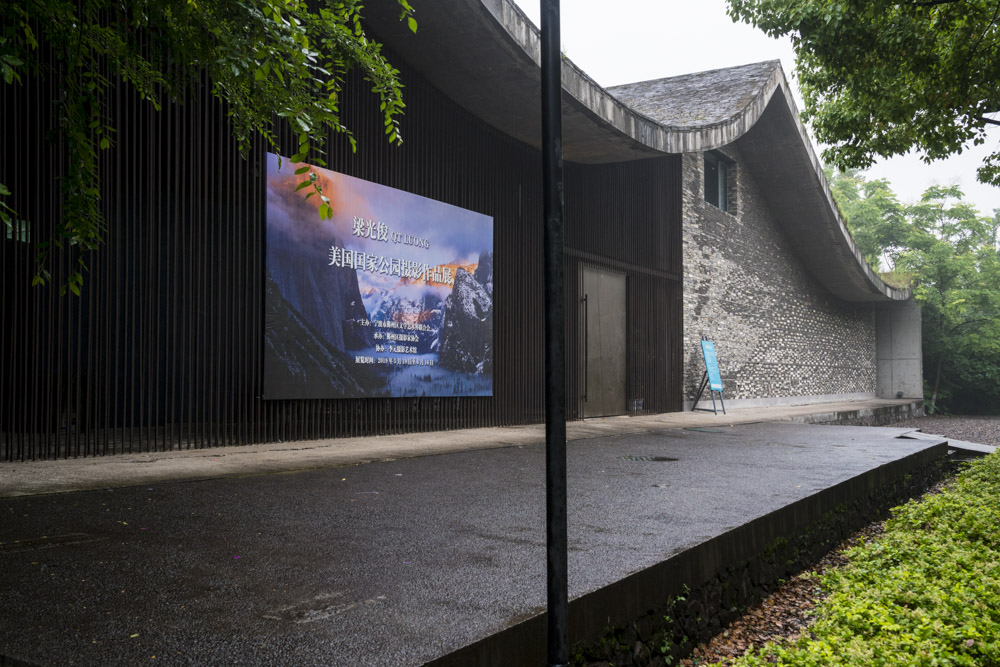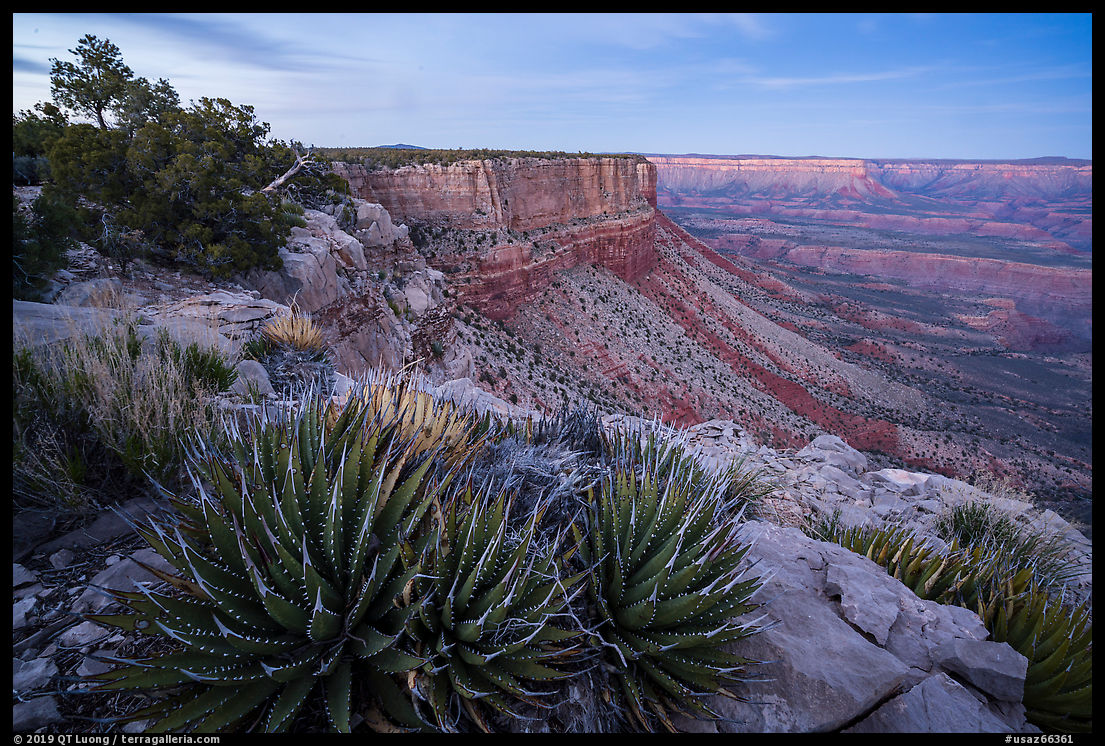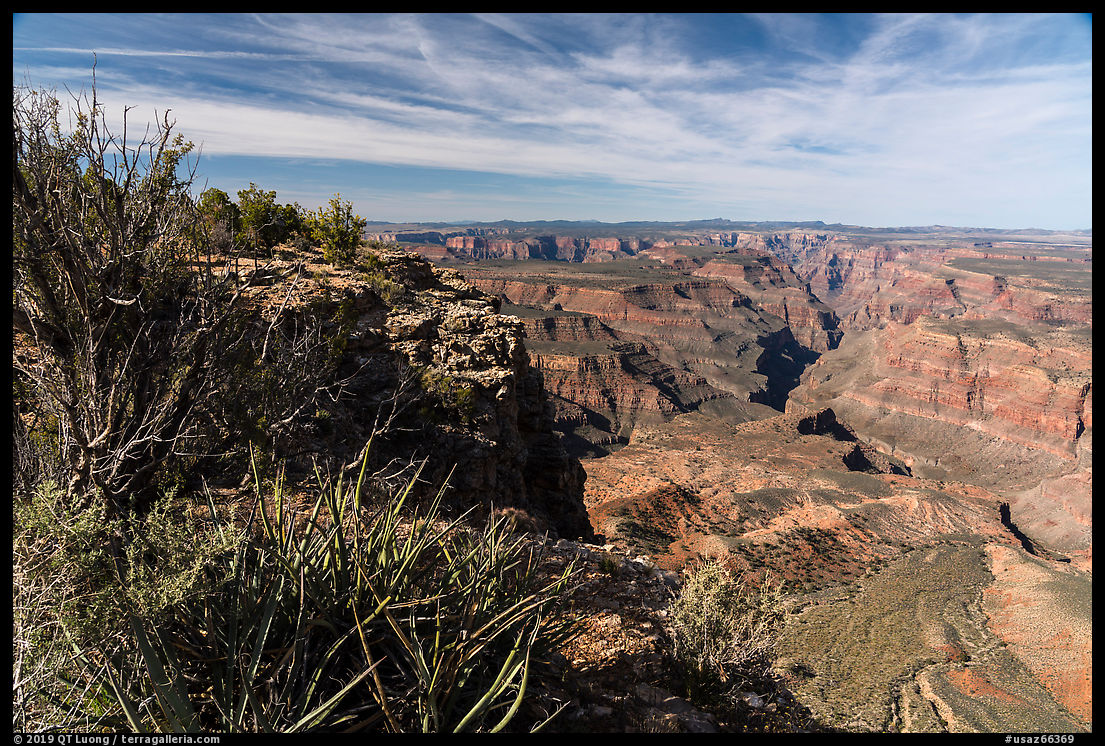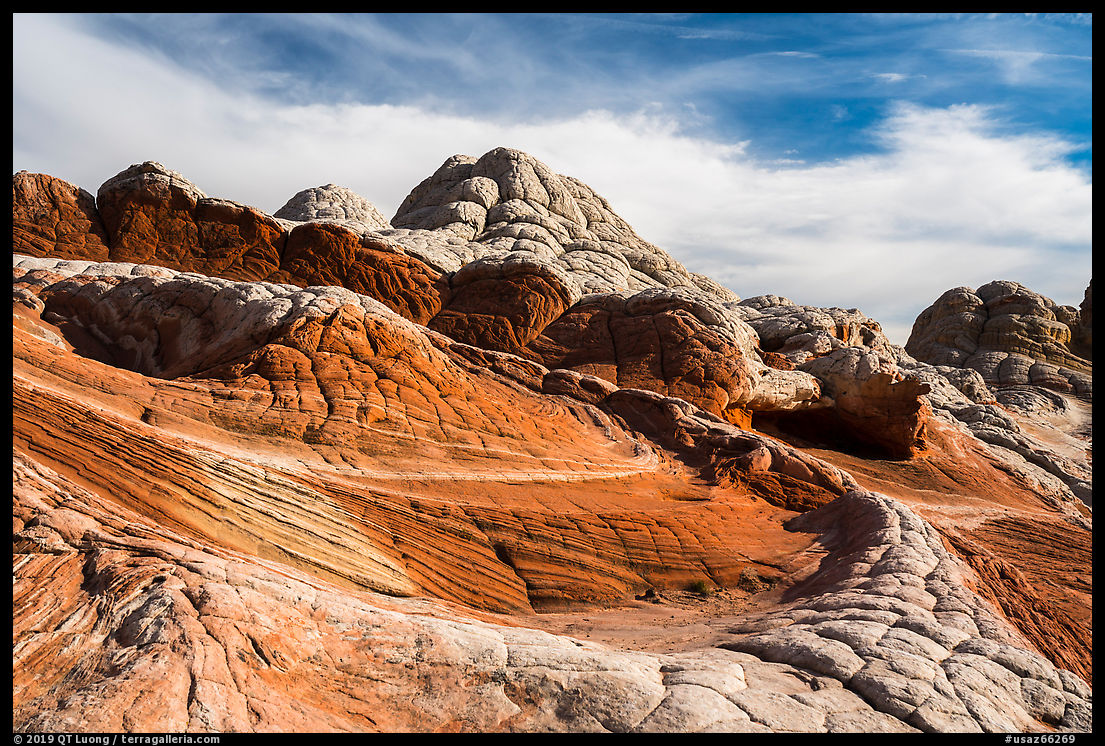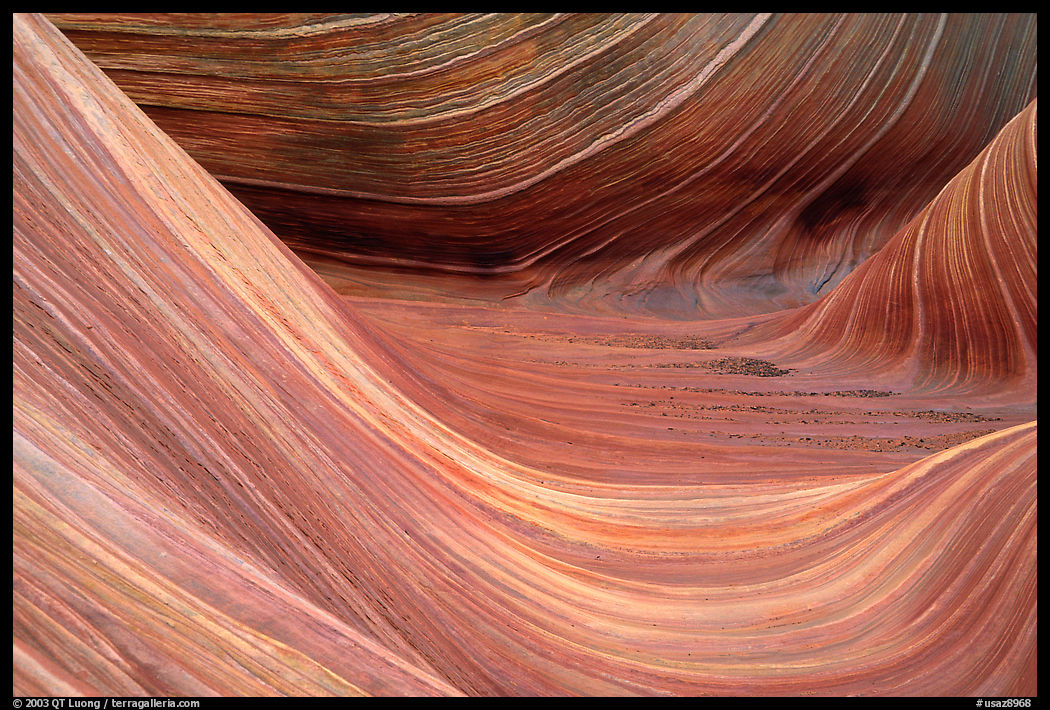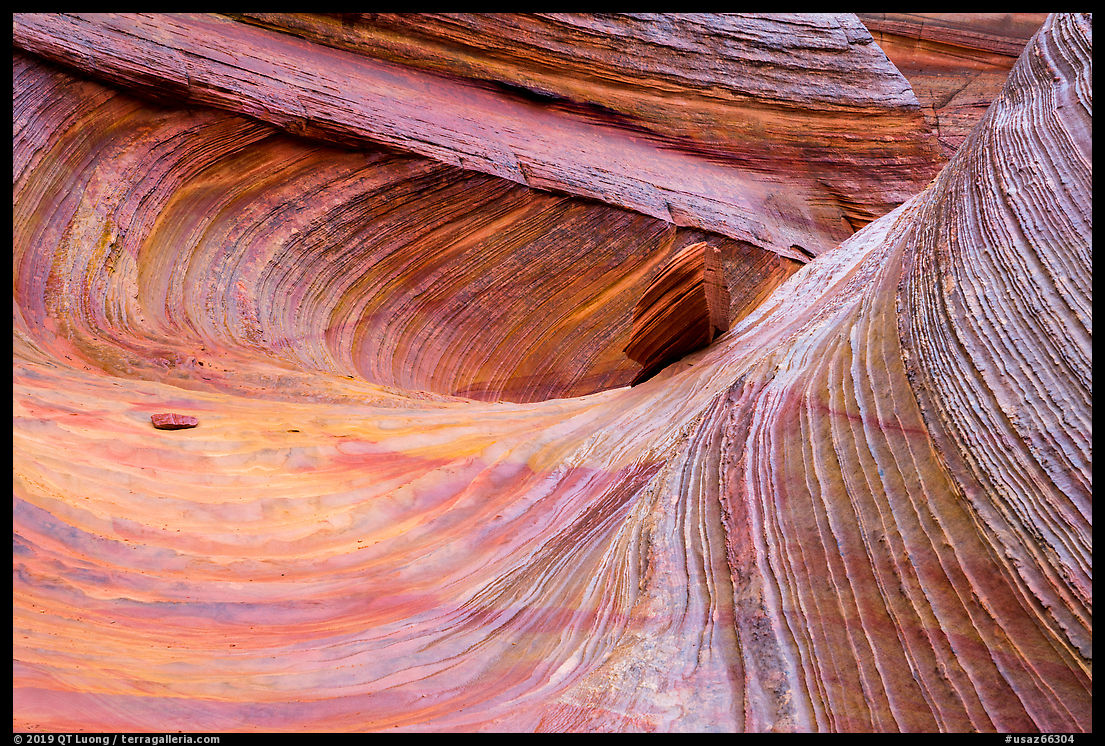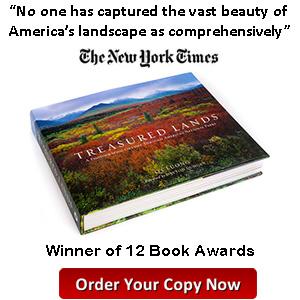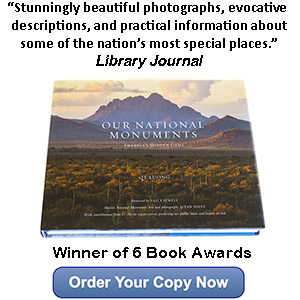Photographer’s Guide to Havasu Canyon – Now and Then
What?
The highlight of the canyon is 100-feet Havasu Falls, located 2 miles downstream of the village. The classic elevated side view cannot be missed as it is found along the trail, and from the base, you can photograph the falls with beautiful travertine terraces in the foreground. From time to time, flash floods rearrange the configuration of the falls. A particularly big one occurred in 2008, after which Havasu falls lost its distinctive two separated parts, as well as many travertine terraces.

Mooney Falls, 0.5 miles farther down, is twice as high (200 feet) and a starker simple ribbon enclosed in a steep bowl. After the two tunnels, there is a high view from the trail with travertine stalactites as foreground. To photograph the fall from the bottom, you’d need to go down a nearly vertical section using ladders and chains, so good footwear and free hands are necessary. Keep in mind that Mooney Falls is named after a prospector who died while trying to find a way down to the bottom of that waterfall.

The waterfalls are in the shade in the early morning and in the late afternoon. As often with waterfalls, shade provides the most foolproof conditions for photography. They are sunlit from late morning to mid-afternoon, with the most even light at midday. During the warm months, you are likely to see many people in the water at the base of Havasu Falls except early and late in the day.
There are a total of 5 waterfalls. Less than a mile downstream from Supai village, Upper and Lower Navajo falls are on your way to the two main waterfalls. 2.5 miles downstream from Mooney Falls, Beaver Falls is wide and drops in several tiers. With the 2019 mandated 4 days/3 nights campground stay, a good plan would be to hike in the first day and out the last day, and devote each of the full days to Havasu/Navajo Falls and Mooney/Beaver Falls.
When?
The creek’s flow doesn’t vary much during the year, but the deciduous vegetation of the canyon does. Trees turn green in April and May. Spring and summer have verdant vegetation, and the greens add to the visual appeal of the canyon. However, they are also the most popular times. In warm weather, people are likely to be found hanging out in the pools at the base of Havasu Falls for most of the day. Summer (June, July, August) temperatures can reach 100F-115F and there are risks of flash floods during the monsoon season, which extends to September.

Autumn is quieter and brings moderate temperatures and fall colors in October and November. Winter is the quietest season, during which overnight freezing temperatures are possible, which is not an impediment for photography. Although many trees are bare, I still found some remnants of autumn colors in the canyon.
How?
Getting a permitAs detailed in the final section, back twenty years ago, I just showed up at the campground. Since then, regulations and fees have steadily increased. At one point, you were allowed to come to the campground without a reservation, but you’d pay a double fee. Since 2016, you must come with a reservation either at the lodge or the campground, and it doubles as a permit. You need to present a photo ID and reservation at the tourist check-in office to obtain a wristband, and nobody is permitted to proceed past the village without a wristband. Reservations are highly competitive and fill up quickly after the opening time, so be sure to keep current with the latest registration process and mark the relevant date in your calendar.
Sleeping
The lodge is located in Supai village, requiring a 4-mile roundtrip hike to the falls, but in addition to not having to carry camping gear, you can find food and restaurants in the village. In 2019, reservations opened on June 1, 2019 for the year 2020 with a price of $440 per room per night (for up to 4 people), plus a permit fee of $110/person. All reservations were processed by phone only. See the official site for details.
The campground is located 2 miles downstream from Supai village and is very conveniently situated between Havasu Falls and Mooney Falls. Campsites are not designated, but one should minimize the impact by using existing sites. The cost has increased dramatically over the last few years. Back in 2017, there was a permit fee of $60 and a camping fee of $25 per night for each person. In 2018, the permit fee rose to $110. In 2019, this changed to $100 per night (+$25 for weekends) inclusive of the permit fee, but with a new minimum stay of 3 nights. The price hike hasn’t lessened the demand. Reservations opened on February 1, 2019 at 8am for the entire calendar year, and I read that they sold out in just a couple of hours. All reservations are now processed online only at havasupaireservations.com. Creating an account is necessary to access the detailed and useful information available on the site and to make a reservation.
Getting there
Havasu Canyon is situated outside the limits of Grand Canyon National Park and far west out of the way from the South Rim. The trailhead, called Hualapai Hilltop is a 3.5 hours drive from Las Vegas or Flagstaff. Hualapai Hilltop is located at the end of Indian Road 18, 60 miles from the turnoff from Route 66, 7 miles east of Peach Springs, Arizona, which is the nearest town. Even lodging there fills up fast.

From Hualapai Hilltop, the trail descends about 1,000 feet in the first 1.5 miles, and then the other 1,400 feet in the remaining 8.5 miles to the campground and main falls. There is no water and little shade along the way. The well-used trail is easy to follow and as scenic as classic Grand Canyon National Park trails. Hiking early in the morning is a must in warmer months, but note that per current regulations, night hiking is prohibited.
Unlike for most locations 10 miles from the trailhead, there are options to make the journey easier. Helicopters are used as a means of transportation for tribe members, and after they are done giving rides to them, they offer rides to visitors ($85 one-way) on a first-come, first-serve basis. Signing up early in the morning is enough to guarantee a ride later in the day.
The pack animals issue
Pack animals are also available, either in the form of horse rides or mule trains which can carry bags. Given the general poverty of the area, it is not entirely surprising that compared to the strict NPS standards under which the national park concessionaires must operate, the animals work in conditions that have been described as abusive by some witnesses. This appears to have been going on for a long time, but it is only recently that a group has documented and publicized the abuse, presenting a compelling case for not using pack animal services in Havasu Canyon. Hopefully, they may have effected some change, judging from the site havasupaireservations.com that now handles pack mule reservations. They mention “New in 2019: […] significantly higher standards for Pack Mule care and welfare”, as well as limitations on sizes, weight, and prohibitions of hard-sided items (such as coolers) that could help.
Although not exactly welcome, an attentive look at the village’s dwellings reveals third-world living conditions, unfortunately all too frequent on Indian reservations. Those seem to get less attention on social media than the animals. As the pack animal services provide much-needed revenue to the tribe, the site linked above recommends hiring pack animals as a way to enhance one’s experience. There is a delicate balance to be struck between economic development and conservation there. Having seen at other places the degradation caused by over-visitation, I would have to disagree with the approach of trying to make the place accessible to many, especially given the social media fueled explosion in popularity of Havasu Canyon. People who have acquired the ability to visit a location 10 miles from the trailhead unassisted are more likely to have also learned to be more respectful of the environment and to be more aware of “leave no trace” principles.
My Experience then
Twenty years ago, packing camping gear and my large-format photography equipment, I was planning to buy food at the village, but by the time I got there at dusk in the short days of winter, I was disappointed to see all stores and restaurants closed. At the campground, I didn’t see anybody else, and as a result, became the prime target for one of the many stray dogs that wander around. It was so aggressive that to keep it quiet, I had to give it one of my few energy bars, the only food that I had left.

I spent the next day photographing the falls on an empty stomach. After the morning session, I waited until the afternoon for soft reflected light. By the time I got back to the village, stores were closed again. Out of food, I decided to hike out at night, but a few miles from the village, I encountered a man and an elderly woman who were having trouble on the trail because their flashlight had died. Since I had only one light, I couldn’t give it to them. I retraced my steps with the villagers to Supai before hiking out, arriving back at Hualapai Hilltop well after midnight. Although shorter than I wished, it was quite a memorable experience!


























